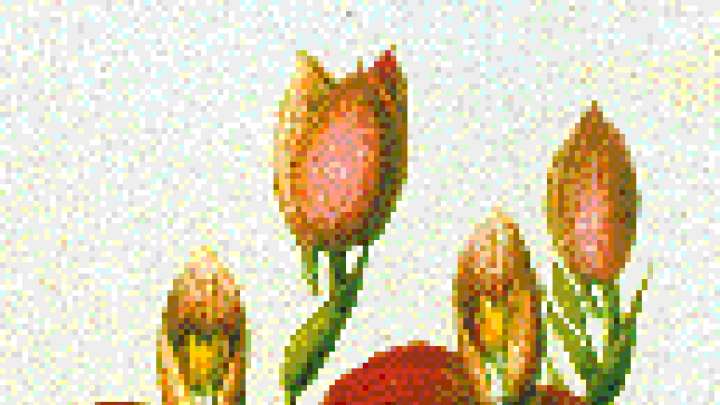An exhibition probing pollination strategies opened on Valentine's Day at the Harvard Museum of Natural History and will run through May 14. Orchids: A Story of Seduction features live orchids, a continuous slide show of 125 ravishing species, displays explaining the propagation of orchids from their miniscule seeds, a "sniff station," and a guide to orchids that grow wild in New England, as well as dried specimens, illustrations from rare books, watercolors, and orchidological paraphernalia from the Oakes Ames Orchid Herbarium.
Gustavo Romero, keeper of the herbarium, says that it contains about 120,000 specimens, representing some 15,000 of the perhaps 25,000 species of orchids that exist. It is rivaled only by the slightly larger orchid horde at the Royal Botanic Gardens at Kew, and the heart of it was gathered in through the compulsiveness of one man, Oakes Ames, A.B. 1898, A.M. '99, professor of botany and director of Harvard's Botanic Garden. He and hunters hired by him looked high and low--literally--for rare species, assembling some 64,000 orchid specimens, which he gave to the University in 1939.
For perpetuation purposes, orchids in the wild require insects or birds, and the exhibition includes one of Harvard's celebrated glass flowers showing a bee pollinating a catasetum orchid. Some orchids lure insects by smelling sweetly, perhaps of coconut or vanilla, or by stinking like rotting flesh. The lip of the fly orchid, Ophrys insectifera, mimics the form of a female wasp so that a male wasp will attempt to mate with it and depart perhaps dejected, but covered with pollen. Charles Darwin was sufficiently captivated by the sex lives of these plants to write On the Various Contrivances by Which British and Foreign Orchids Are Fertilised by Insects (1862). The exhibition shows an orchid that Darwin himself came upon in Madagascar with a white, star-shaped flower. Its throat is almost 12 inches long, with nectar sitting at the bottom of it. Darwin predicted that a moth would be found with a tongue long enough to reach that nectar. The exhibition includes a specimen of the long-tongued sphinx moth discovered in 1903 and named Xanthopan morganii praedicta to honor the prediction.








